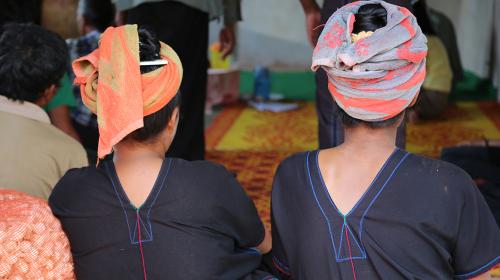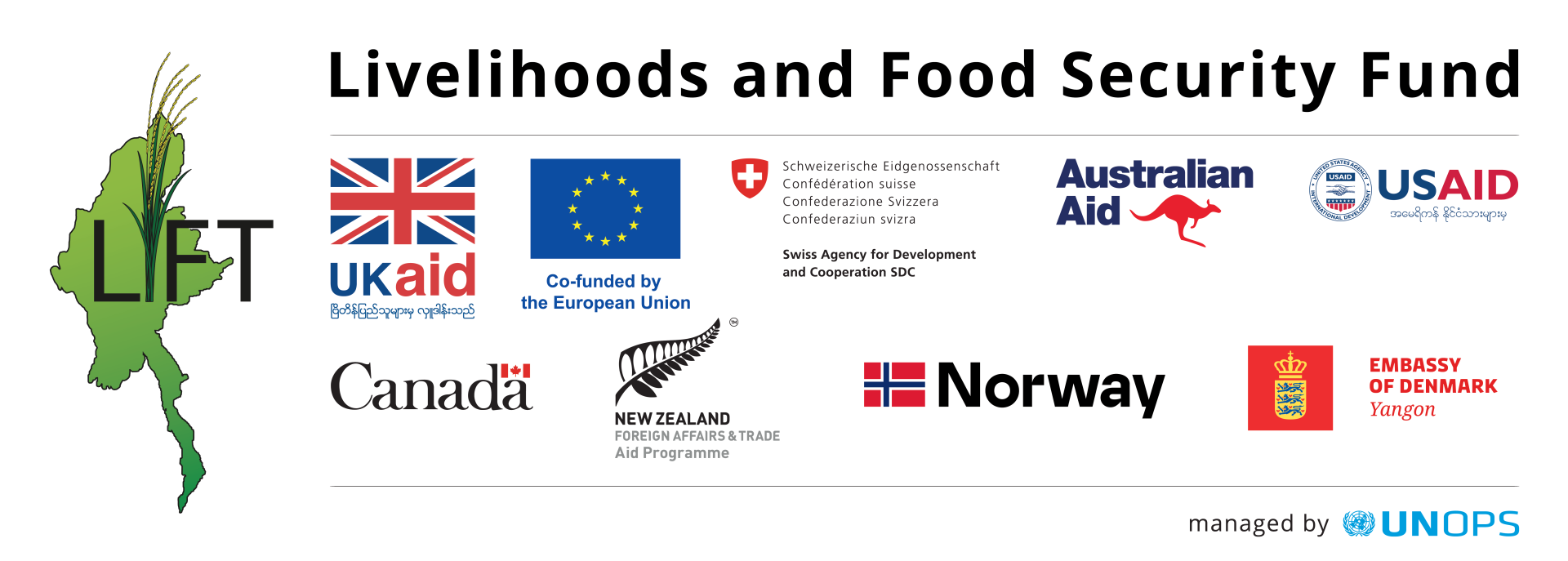
Dr. Elena Shih met with the staff of LIFT and LIFT donor representatives from DFID, the EU, USAID, Switzerland and Australia to lead a seminar on “The Trafficking-Development Nexus on the China-Myanmar Border” at the Australian Embassy in Yangon on 9 August.
Dr. Shih, the Manning Assistant Professor of American and Ethnic Studies at Brown University, made her first trip to Ruili City in Yunnan with an anthropology research team from Beijing’s Minzu University in 2005, and has been working on the China-Myanmar border ever since.
Speaking from her experience of conducting in-depth ethnographic research with migrants and ethnic minorities in the area, she challenged perceptions about the China-Myanmar border region and provided an incisive analysis of problems relating to precarious migration and human trafficking between the two countries.
Efforts to combat the drug trade on the China-Myanmar border have had unintended consequences
Opium production in China began as early as in the 18th century. It was not until the 1970s, however, that the cross-border drug trade with Myanmar started growing significantly. Ruili City, once notorious for its lawlessness, gambling, prostitution and drugs, became an ideal point of distribution into China.
According to Shih, “China’s economic reform period in the 1980s came with sweeping attempts to formalise markets”, leading to “drastic changes in drug production areas in Yunnan”. The Chinese Government aggressively burned the opium poppy fields in Yunnan in an attempt to show its intolerance for the drug trade.
As an unintended consequence, “the land became fundamentally non-arable or only arable for certain kinds of crops,'' creating a lasting negative impact on agricultural production in the province and pushing some farmers into the cross-border drug trade. Continuing demand for illegal drugs led a substantial portion of drug production activities to move to Myanmar’s side of the border.
China’s Belt and Road Initiative was meant to build closer economic ties between China and Myanmar but has also led to a highly securitised border
Long-running conflict and limited economic opportunities in Kachin State have led many Myanmar people to cross the border into China in search of work. Although it was expected that the Belt and Road Initiative, proposed by China to boost economic cooperation between countries, would improve connectivity between China and Myanmar; it also has created new challenges.
There is a deep-rooted fear in China that enhanced transportation infrastructure with Myanmar will increase the smuggling of drugs and the flows of irregular migrants into the country. Chinese authorities have sought to address these concerns by bolstering border security to crack down on the drug trade and informal border crossings.
An administrative entity in Ruili City was set up in 2018 to regulate temporary labour migration. Myanmar nationals can now apply for crossing permits which allow them to enter China for work. However, they are required to cross the border back to Myanmar at least once a week, which is intended to keep migrant workers in the periphery while allowing Chinese companies to leverage the low-cost labour they provide for 3D jobs (dirty, dangerous and degrading jobs) in factories and other sectors of work.
Shih describes how 10 years ago it was common for Myanmar and Chinese people to simply jump over the border fence. Today, the formal entry point into China is laced with barbed wire and heavily guarded. Interestingly, this has not stopped the informal cross-border trade between Myanmar and Chinese people, as shops have been set up on Myanmar’s side of the border to sell merchandise through the fence.
The relationship between trafficking of Myanmar women for forced marriage and China’s gender imbalance may be more complex than it seems
According to the Global Gender Gap Report 2018, China has the world’s most skewed gender ratio at birth, with 33 million more men than women in the country. Reports of women being trafficked to China for forced marriage and/or to birth children have received a great deal of attention from the media and anti-trafficking organisations in recent years. The practice is often explained to be an outcome of China’s historic one-child policy.
However, Shih believes that marriage migration between Myanmar and China hinges on a complex web of social, economic and demographic factors. Although cases of deception do occur, there is also long history of inter-marriage between Myanmar and Chinese people in border areas, and marriage migration should not automatically be conflated with human trafficking. The traditional practice of paying a ‘bride price’ for example should not be understood as the buying of a wife.
It should also be taken into account that most areas bordering Myanmar are rural, meaning that even under the now-abolished one child policy, couples were allowed to have two children to help with farming and businesses. Furthermore, there is a high burden of disease related to HIV in these areas, which has disproportionally resulted in male deaths from AIDS-related illnesses. This has ‘readjusted’ the gender ratio at the local level, with a growing proportion of women participating in the labour force to fill the gap.
Shih therefore believes that blaming trafficking for forced marriage in border areas on China’s unbalanced gender ratio, as it has been extensively in media coverage and by anti-trafficking organisations, is too simplistic and requires a more nuanced understanding of migration for the purpose of marriage between the two countries.
Extensive focus on sex trafficking and forced marriage of women on the China-Myanmar border has led to a disregard for other forms of widespread exploitation
Dr. Shih points out that simplified understandings of cross-border trafficking can lead to responses being insufficient or inadequate. For example, the Anti-Trafficking Law passed in 2008 by the Chinese Government only recognises forced marriage, forced prostitution and the kidnapping of women and children as forms of trafficking; and does not address trafficking of men or trafficking for purposes of non-sexual labour exploitation.
In fact, “nearly all recent interventions on the China-Myanmar border have focused on trafficking for forced marriage and exploitation in the sex industry, often ignoring the larger vulnerabilities that plague migrant workers in these areas”.
While forced marriage and sexual exploitation of women and children must be addressed, the unequal attention paid to such forms of trafficking has diverted attention away from other prevalent types of exploitation on the China-Myanmar border. Trafficking for non-sexual forms of labour exploitation has for instance received little attention, and is not currently a recognised phenomenon in China. In addition, responses that exclusively target the trafficking of women and girls can lead to protectionist measures that restrict their mobility and agency.
Next steps in establishing more effective interventions for human trafficking on the China-Myanmar border
Dr. Shih recommends that anti-trafficking organisations and government agencies seek a more nuanced understanding of the complex situation of vulnerability on the China-Myanmar border – encompassing issues of protracted conflict, development-related displacement, marginalisation of ethnic minorities and lack of labour rights protection for migrants – in order to develop more comprehensive, long-term and rights-based responses.
She is currently working to finalise her book project, entitled “Manufacturing Freedom: Rescue, Rehabilitation, and the Slave Free Good”, an ethnography of the transnational social movement to combat trafficking in China, Thailand and the United States.
WRITER: Sandra Vedeld





